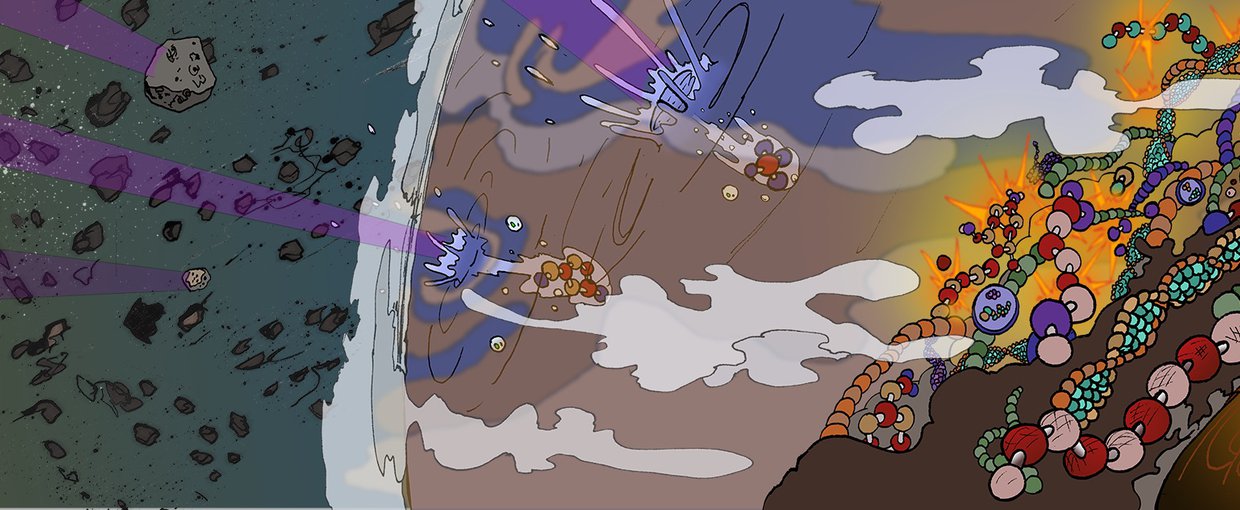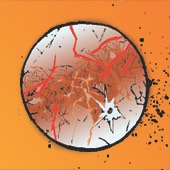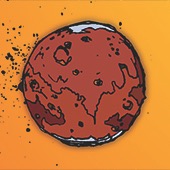How To Use
How to use this resource to best communicate astrobiology concepts
There are 6 major parts of the Astrobiology Learning Progressions that help frame and guide education, outreach, communication, and public engagement efforts in astrobiology: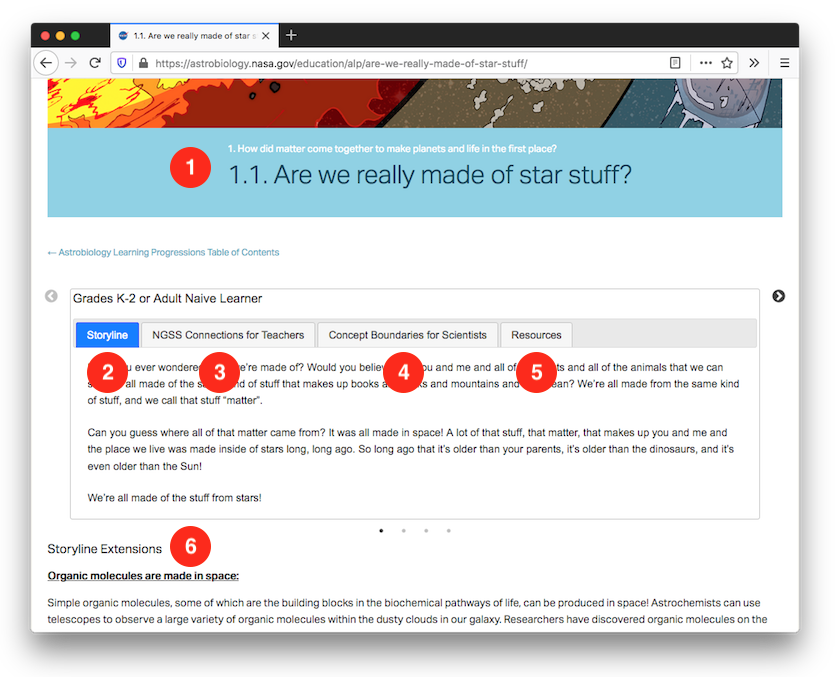
- Core Learning Questions and their Sub-Questions: The Astrobiology Learning Progressions are broken down into 7 main questions, each of which represents a major interdisciplinary concept in astrobiology. Each Core Learning Question has several sub-questions, at which level the content below is provided.
- Progressed Astrobiology Storylines: There is a storyline corresponding to the interdisciplinary concept of each sub-question that is progressed in sophistication for each grade band. Scientists and educators can read the storyline material at, above, and below their target grade band to better understand the level of information to present to a particular audience.
- NGSS Connections for Teachers: Provided for each grade band in each sub-question, this section shows material from the Next Generation Science Standards (NGSS) that ties directly to each astrobiology storyline. Disciplinary Core Ideas (DCIs) are educational standards (or performance expectations) based on key ideas that have broad implications across multiple domains of science and engineering. They are grouped into four domains: Physical science (PS), Life Science (LS), Earth and Space Science (ESS) and Engineering (E). For example, PS1.A represents a performance expectation for students in Physical Science. Also pulled directly from NGSS, the Cross-cutting Concepts can help scientists and teachers highlight connections to the multiple domains of science to aid students in developing an interdisciplinary, scientifically-based understanding of the world.
- Concept Boundaries for Scientists: Provided for each grade band in each sub-question, this section provides information to help support scientists in reaching students in a particular grade band effectively. The “Big Ideas” briefly summarize the major themes in the related storyline. The “Boundaries” serve as a rough guide to help scientists know the depth of information to present when engaging with a specific grade.
- Learning Resources: Use the “Learning Resources” tab to jump to a list of lessons, multimedia resources, and hands-on activities for each sub-question.
- Storyline Extensions: Some questions have additional material educators may choose to use to extend the Astrobiology storyline (see item 1).
First, click on a sub-question that most interests you.
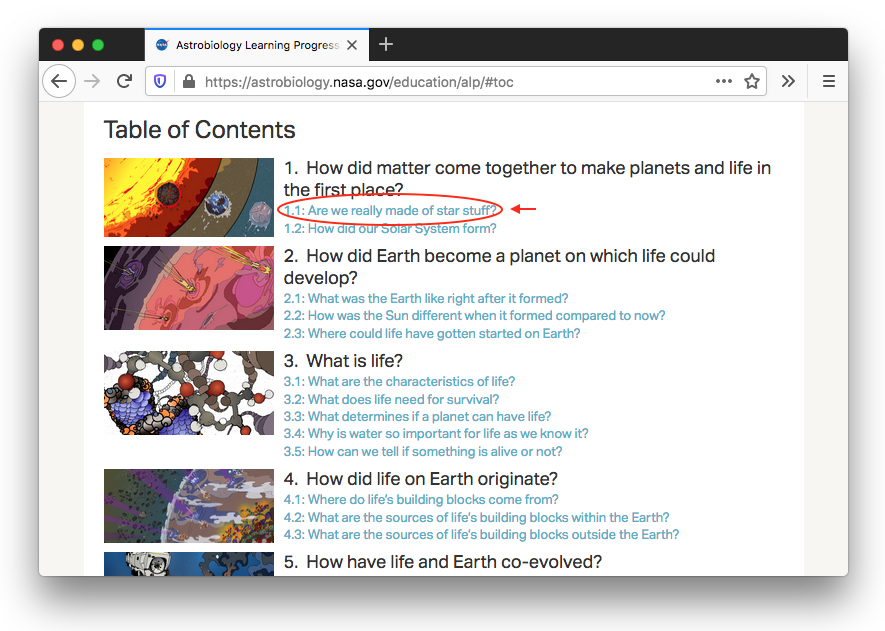
Then, using the arrows to the left and right of the text box, navigate through the grade bands.
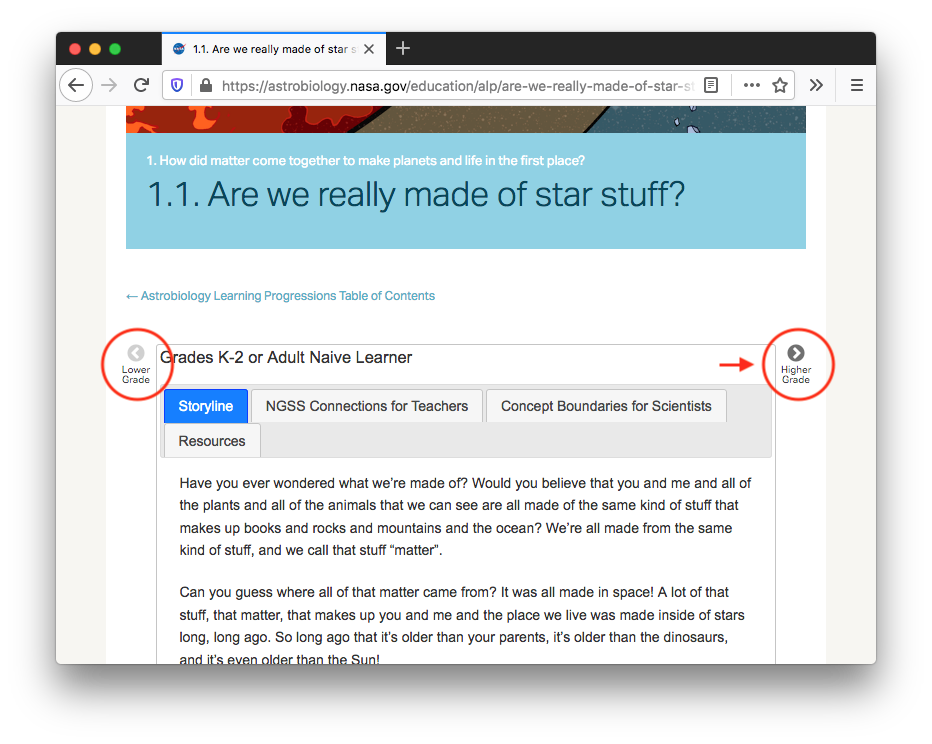
At each grade band, use the tabs to read through the Astrobiology Storyline, the NGSS Connections for Teachers, the Concept Boundaries for Scientists, and/or the Learning Resources.
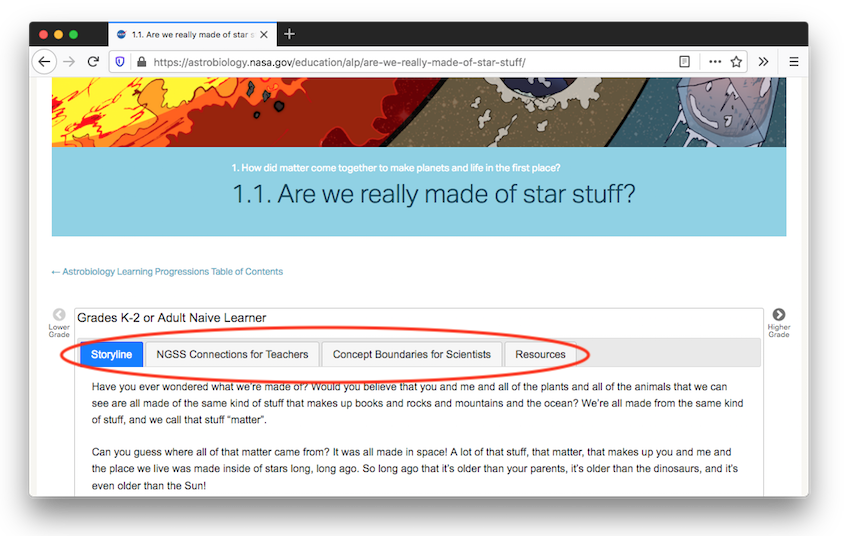
Return to the Table of Contents to select another sub-question to explore.


